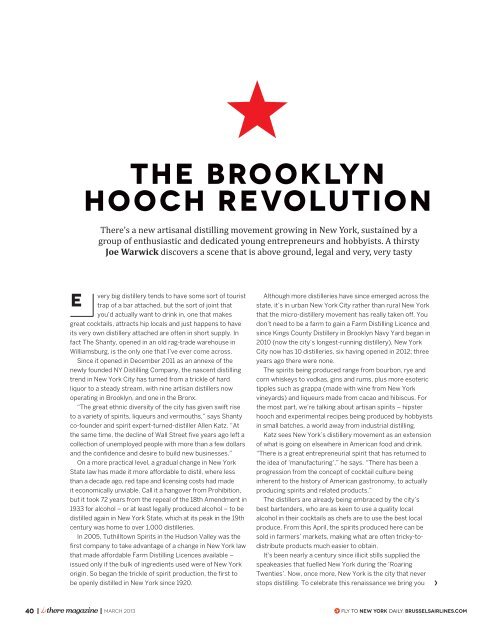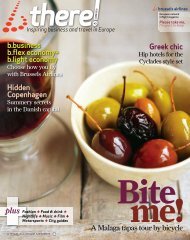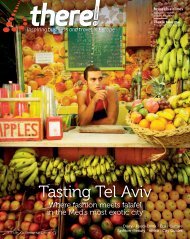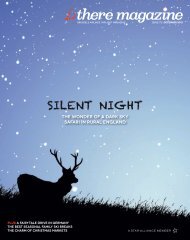march-2013
march-2013
march-2013
You also want an ePaper? Increase the reach of your titles
YUMPU automatically turns print PDFs into web optimized ePapers that Google loves.
E<br />
The Brooklyn<br />
hooch revolution<br />
There’s a new artisanal distilling movement growing in New York, sustained by a<br />
group of enthusiastic and dedicated young entrepreneurs and hobbyists. A thirsty<br />
Joe Warwick discovers a scene that is above ground, legal and very, very tasty<br />
very big distillery tends to have some sort of tourist<br />
trap of a bar attached, but the sort of joint that<br />
you’d actually want to drink in, one that makes<br />
great cocktails, attracts hip locals and just happens to have<br />
its very own distillery attached are often in short supply. In<br />
fact The Shanty, opened in an old rag-trade warehouse in<br />
Williamsburg, is the only one that I’ve ever come across.<br />
Since it opened in December 2011 as an annexe of the<br />
newly founded NY Distilling Company, the nascent distilling<br />
trend in New York City has turned from a trickle of hard<br />
liquor to a steady stream, with nine artisan distillers now<br />
operating in Brooklyn, and one in the Bronx.<br />
“The great ethnic diversity of the city has given swift rise<br />
to a variety of spirits, liqueurs and vermouths,” says Shanty<br />
co-founder and spirit expert-turned-distiller Allen Katz. “At<br />
the same time, the decline of Wall Street five years ago left a<br />
collection of unemployed people with more than a few dollars<br />
and the confidence and desire to build new businesses.”<br />
On a more practical level, a gradual change in New York<br />
State law has made it more affordable to distil, where less<br />
than a decade ago, red tape and licensing costs had made<br />
it economically unviable. Call it a hangover from Prohibition,<br />
but it took 72 years from the repeal of the 18th Amendment in<br />
1933 for alcohol – or at least legally produced alcohol – to be<br />
distilled again in New York State, which at its peak in the 19th<br />
century was home to over 1,000 distilleries.<br />
In 2005, Tuthilltown Spirits in the Hudson Valley was the<br />
first company to take advantage of a change in New York law<br />
that made affordable Farm Distilling Licences available –<br />
issued only if the bulk of ingredients used were of New York<br />
origin. So began the trickle of spirit production, the first to<br />
be openly distilled in New York since 1920.<br />
Although more distilleries have since emerged across the<br />
state, it’s in urban New York City rather than rural New York<br />
that the micro-distillery movement has really taken off. You<br />
don’t need to be a farm to gain a Farm Distilling Licence and<br />
since Kings County Distillery in Brooklyn Navy Yard began in<br />
2010 (now the city’s longest-running distillery), New York<br />
City now has 10 distilleries, six having opened in 2012; three<br />
years ago there were none.<br />
The spirits being produced range from bourbon, rye and<br />
corn whiskeys to vodkas, gins and rums, plus more esoteric<br />
tipples such as grappa (made with wine from New York<br />
vineyards) and liqueurs made from cacao and hibiscus. For<br />
the most part, we’re talking about artisan spirits – hipster<br />
hooch and experimental recipes being produced by hobbyists<br />
in small batches, a world away from industrial distilling.<br />
Katz sees New York’s distillery movement as an extension<br />
of what is going on elsewhere in American food and drink.<br />
“There is a great entrepreneurial spirit that has returned to<br />
the idea of ‘manufacturing’,” he says. “There has been a<br />
progression from the concept of cocktail culture being<br />
inherent to the history of American gastronomy, to actually<br />
producing spirits and related products.”<br />
The distillers are already being embraced by the city’s<br />
best bartenders, who are as keen to use a quality local<br />
alcohol in their cocktails as chefs are to use the best local<br />
produce. From this April, the spirits produced here can be<br />
sold in farmers’ markets, making what are often tricky-todistribute<br />
products much easier to obtain.<br />
It’s been nearly a century since illicit stills supplied the<br />
speakeasies that fuelled New York during the ‘Roaring<br />
Twenties’. Now, once more, New York is the city that never<br />
stops distilling. To celebrate this renaissance we bring you<br />
40 MARCH <strong>2013</strong><br />
FLY TO new york daily. brusselsairlines.com
















